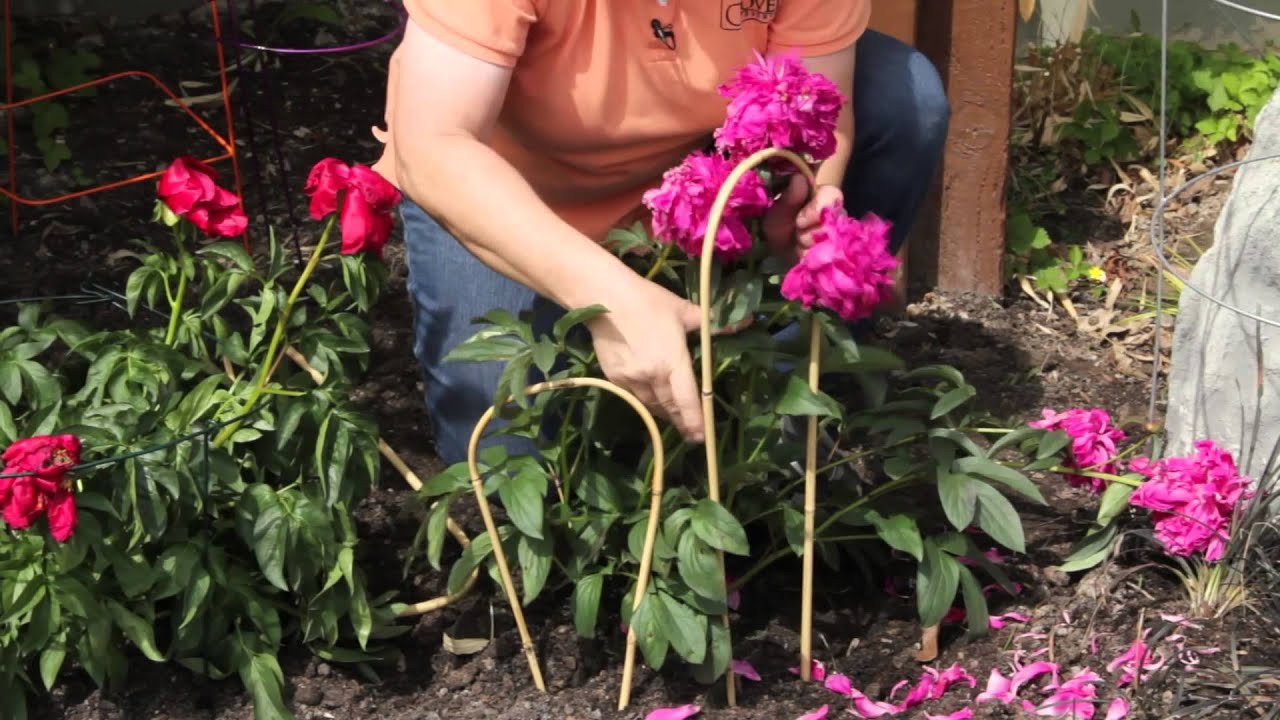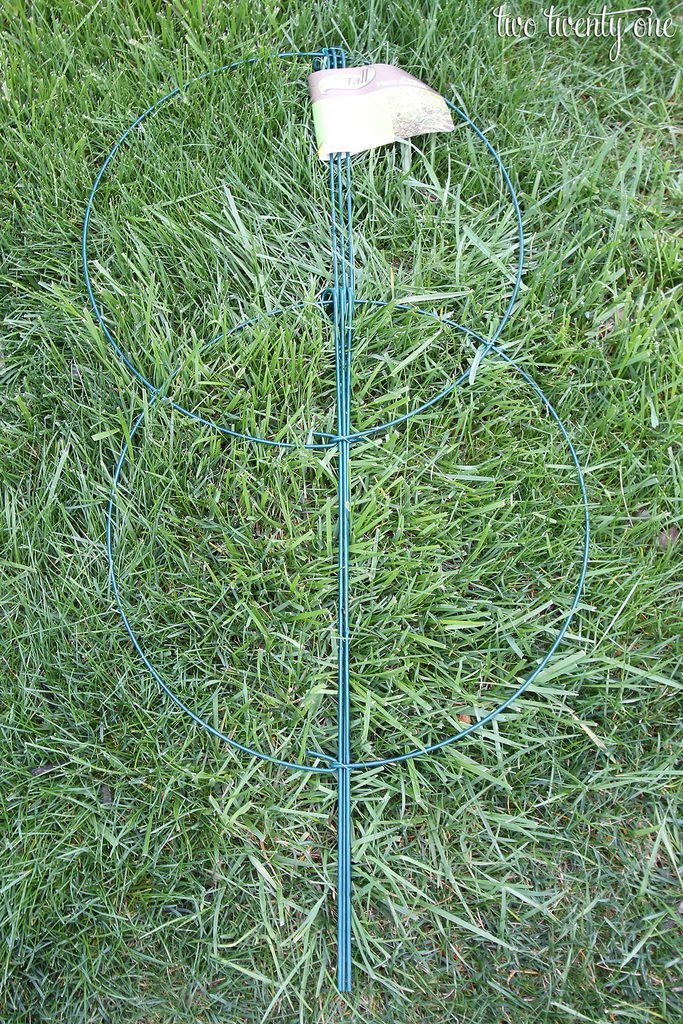Do your beautiful peonies keep falling over? Are you struggling to find a way to make sure these fragrant blooms don’t droop over or lay limp on the ground? In this article, we’ll show you how to keep your peonies upright no matter what size they are or which species they come from.
Peonies are prized for their huge, fragrant blooms in late spring. But their profusion of flowers can often cause flopping and top-heaviness. Learning how to properly prop up peonies ensures the blooms stay upright and on display.
Follow these tips for keeping your peony bushes supported and flowering magnificently.
Set Up Supports Early
Don’t wait until peonies start drooping to put up supports. Install a support system for each plant in early spring before rapid growth begins. This prevents damage to emerging shoots and stems.
The optimal time is when peony sprouts are 4-6 inches tall Supports can be left in place year after year
Use Sturdy Single or Double Rings
Commercial peony rings made of rigid wire or metal work best for supporting peonies. Single rings sufficiently support most plants. Very prolific, top-heavy varieties may need a double ring for maximum stability.
Push the support rings 6-12 inches into the ground encircling the entire plant without cutting into stems.
Bamboo, Twine, and Cages Also Work
If peony rings aren’t available, bamboo stakes, garden twine, or stiff wire tomato cages can also prop up peonies. Use at least 3-4 stakes or make a triangular cage around plants.
Crisscross twine in a diamond pattern between the stakes to create a supportive mesh. Keep twine loose enough for emerging shoots.
Use Proper Staking Techniques
When using bamboo stakes and garden twine to support peonies:
-
Place stakes 6-12 inches from the plant, angled slightly outward. Use at least 3 stakes per plant.
-
Secure stakes 1-2 inches deep to anchor them.
-
Start crisscrossing twine when shoots are 4-6 inches tall. Wrap it loosely so stems have room to grow.
-
Tie twine securely to each stake to keep the structure rigid.
-
Add more criss-crossed twine as stems lengthen, aiming for 4-6 inch diamond gaps.
Try Peony Cages for Single Plants
Decorative peony cages with a ring over the clump and legs pushed 6-12 inches into the soil stabilize without staking. No staking required!
For large, heavily blooming bushes, use double peony cages, one inside the other. Or place short posts under a standard cage for added support.
Add Supplemental Stakes if Needed
Even with rings or cages, some top-heavy peonies may need extra help. Insert 1-2 sturdy stakes on either side of exceptionally large blooms to prevent flopping.
Use soft plant ties or twist ties to gently secure heavy flower heads to the stakes without damaging the stem.
Monitor Support Systems
Check peony supports regularly once plants start actively growing and blooming. Add extra rings, stakes, or twine as needed to accommodate growth.
Plants can outgrow supports quickly at peak growth. Reinforce wobbly supports to keep peonies upright.
Remove Supports Seasonally or Annually
Peony supports can be removed each year after blooming finishes, or left in place for multiple seasons.
To remove for winter, gently lift supports in fall after plants die back. Store rings and stakes to reuse next spring.
If leaving supports over winter, ensure they aren’t cutting into stems as growth resumes in spring.
Proper Pruning Improves Air Circulation
While supports keep peonies upright, proper pruning is also key to prevent flopping. Pruning improves air circulation and light penetration to minimize disease.
In fall, cut back stems to 6 inches above ground. Remove excess debris and thin congested clumps. Discard diseased stems.
Pruning reduces the leverage weighing down mature plants. Combine with supports for best results.
Know Varieties Prone to Flopping
Some peony varieties are more prone to flopping and need proactive staking:
- ‘Bartzella’ – Pale yellow double blooms are heavy
- ‘Bowl of Beauty’ – Japanese type has large, ruffled blooms
- ‘Coral Sunset’ – Prolific semi-double blooms
- ‘Felix Crousse’ – Huge, ruby red blooms
- ‘Karl Rosenfield’ – Bright red double blooms
- ‘Monsieur Jules Elie’ – Rose-pink blooms up to 8 inches wide
- ‘Sarah Bernhardt’ – Vibrant pink double blooms on weak stems
Keep these top-heavy varieties on your radar for preventive staking annually.
Stake Potted Peonies
Potted peonies often need extra support beyond container sides. Insert 1-2 strong stakes next to the plant and gently tie stems to keep blooms upright with soft plant ties. Frequently check ties as stems grow and elongate.
Avoid Common Mistakes
When supporting top-heavy peonies, avoid these common errors:
- Waiting until after flopping to add supports
- Using flimsy, weak stakes that can’t hold blooms
- Allowing twine or ties to cut into tender stems
- Failing to check and reinforce supports as needed
- Not removing or loosening supports properly in fall
- Forgetting to stake new or previously staked plants
- Staking too tightly, restricting growth and air flow
With proper preparation and diligent monitoring, you can keep even the most prolific bloomers standing tall. Follow these tips for showstopping blooms that don’t end up on the ground!

How to Keep Peonies Upright
Peony blooms do best when they are supported, so it is important to make sure they have some sort of structure or support around them.
You can use a stake and twine or hoop to keep your peony plants upright as they grow and give them additional support.
Some people like to use wire tomato cages, but I prefer to use peony cages to support my peonies.
Peony cages are used to provide support to the growing plants. This helps keep the plant’s flowers and foliage upright. The cage prevents them from collapsing under their own weight or becoming overwhelmed by strong winds.
The cage also allows air to circulate around the flower buds, keeping them in pristine condition as they unfurl each spring season.
It also helps protect peonies from certain pests, such as deer and rabbits who may have an appetite for flower petals.
In some cases, a decorative peony cage can be used as part of the landscape design.
Peony grid cages are my preferred cages to buy. The center of the support circle contains grids that the peony blooms grow up through. This provides great support.

Where to Buy Peony Plant Supports
Peony cages are typically sold at garden or hardware stores, or you can buy them online.
When purchasing a peony cage, it is important to keep in mind the size of your peonies as they require plenty of space and air circulation to grow.
You will also have to consider the material your cage is made from; it should be sturdy enough to last an entire growing season and protect your blossoms from any damage.
How we use peony supports to hold up the Peony Blooms
FAQ
How to support peonies from falling over?
To prevent peonies from falling over, gardeners can use several support methods. One common technique is to install stakes (wood or metal) around the plant and use twine or netting to create a supportive cage according to Longfield Gardens. Another option is to use peony cages or hoops, which come in various sizes and can be placed around the plant early in the season.
How do you perk up droopy peonies?
Another option is to bolster each flower stem with its own stake before blooming begins. This method takes more time but results in a prettier-looking peony. Finally, if your peony is planted in partial sun, it may be worth the effort to dig its massive root ball in fall and move it to a sunnier spot.
Why are my peonies flopping over?
Why Do Peonies Flop Over? Peonies flop over due to their large and heavy flowers on top of long stems. The stems aren’t always flexible enough to support the full weight of the large bloom. Certain varieties like Sarah Bernhardt peonies require support.
